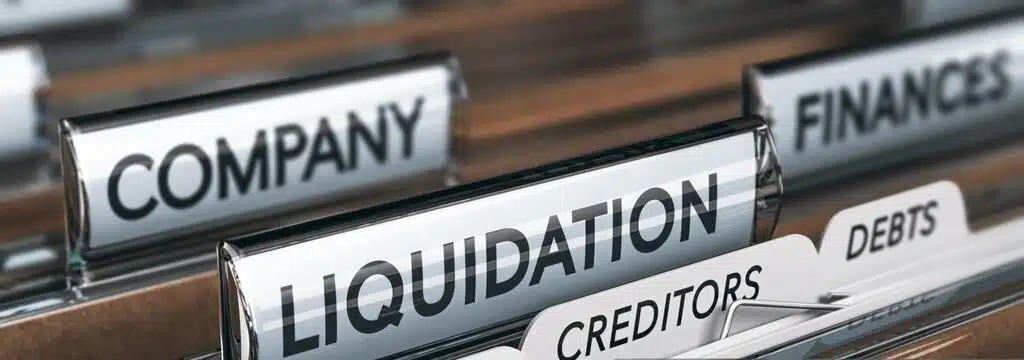Many business owners remain unclear about the liquidation process and the role of a liquidator. By understanding the circumstances that trigger liquidation and the powers of a liquidator, business owners can better navigate insolvency challenges.
When Does Liquidation Occur?
Liquidation is a final insolvency procedure for a company that is unable to meet its debts, determined through either a cash flow test or a balance sheet test. While other insolvency processes, such as administration or a Company Voluntary Arrangement (CVA), may provide opportunities for recovery, liquidation is a terminal process that ultimately leads to the company’s dissolution.
Types of Liquidation
Liquidation can be categorised into two main types: compulsory liquidation and voluntary liquidation. Compulsory liquidation is mandated by the court, typically following a winding-up petition from a creditor or if the court deems liquidation to be just and equitable. In contrast, voluntary liquidation can be initiated by the company’s directors and shareholders (members’ voluntary liquidation) or by its creditors (creditors’ voluntary liquidation).
What Does Liquidation Involve?
Liquidation involves converting a company’s assets into cash to pay off creditors. In both types of liquidation, an appointed liquidator manages the process, and the directors lose their authority. The company remains liable for its existing contracts until the liquidation process is finalised.
The Role of the Liquidator
Throughout the liquidation process, the liquidator acts as the company’s agent, holding a fiduciary responsibility to both the company and its creditors. The liquidator wields significant powers but must use them solely to identify the company’s assets and distribute the proceeds to creditors following a regulated order of priority.
If creditors establish a liquidation committee to protect their interests, the liquidator must report to this committee and be accountable for their actions. The liquidator is required to inform the committee about the disposal of the company’s property or that of any member’s relative, as well as notify them if legal assistance is sought.
Typically, a private-sector insolvency practitioner is appointed as liquidator by the creditors or by an official receiver from the UK’s Insolvency Service when the asset realisation and distribution process is more intricate.
Liquidator’s Powers
Under the Insolvency Act, the liquidator has several key powers, including:
- Settling a list of contributories.
- Making calls on contributions.
- Summoning general meetings to obtain necessary approvals.
The liquidator’s primary responsibility is to secure the highest possible price for the company’s assets to maximise distributions to creditors. To achieve this, the liquidator can:
- Challenge and reverse certain detrimental transactions to increase asset value.
- Sell company property.
- Enter into contracts on behalf of the company without personal liability.
- Apply to the court for the restoration of any assets improperly disposed of, ensuring fairness to creditors.
- Investigate and take action against current or former directors for the benefit of creditors.
If the liquidator needs to act beyond their authority, such as in the case of settling claims, they can seek court approval or consent from the liquidation committee, if one exists.
Where to Find More Information on Insolvency Processes
Insolvency procedures can be complex, with various options available for companies facing financial difficulties. It is advisable to consult an experienced solicitor before pursuing any insolvency process to ensure informed decision-making.
For more information or for expert advice on business or personal legal issues, contact us at info@carterbond.co.uk or email us at www.carterbond.co.uk or call us on 020 3475 6751.
This content is not intended to be used as a substitute for specific legal advice or opinions. No recipients of content from this site should act or refrain from acting on the basis of content of the site without seeking appropriate legal advice.


